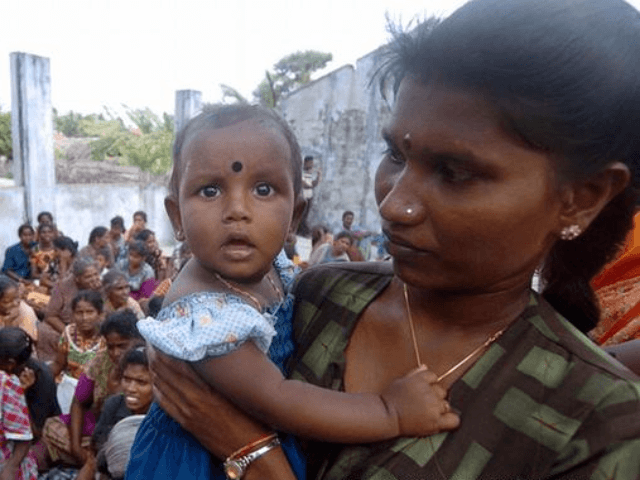Radical imam and Sri Lanka bombing mastermind Mohamed Zahran Hashim wrote a series of Facebook posts before launching the Easter Sunday attacks that killed hundreds of people, in which he called for the murder of non-Muslims including women and children.
The Facebook posts reportedly remained online as of Tuesday night despite numerous complaints from moderate Muslims.
“Non-Muslims and people who don’t accept Muslims can be killed, along with women and children,” Hashim said in one of the videos he posted to Facebook. He also made extensive use of a YouTube channel, which has been shut down.
“Hashim had developed a reputation as a preacher who ‘copied’ ISIS propaganda videos with his animated and vehement postings who has long espoused vocal support for the world’s most dangerous terrorist brand,” Fox News reported last week.
“The pro-ISIS ‘Al-Ghuraba’ media channel in Sri Lanka, which operated across Facebook and YouTube as its primary platforms, reportedly featured his inflammatory videos. The videos often advocated the notion that only Muslims are acceptable rulers and he routinely railed against Christians, Buddhists, and Hindus,” the Fox report said.
The role of social media in the Sri Lanka bombings has been hotly debated as the official picture of Hashim shifted from an obscure crank no one had ever heard of to an influential radical with a sizable online following who attracted hundreds to his sermons, a radical recruiter so dangerous that other Muslims repeatedly referred him to the authorities. An Islamic State recruit arrested in India this week told investigators he was radicalized by Hashim’s online videos.
The Sri Lankan government on Tuesday lifted a ban imposed on social media after the attacks to prevent the spread of disinformation and inflammatory material. Some criticized the ban as an unacceptable infringement upon free speech more likely to inconvenience the law-abiding than to disrupt the activities of terrorists, who know how to work around crude Internet blocks.
Others said the ban did not go far enough to address the underlying problem of social media services acting too slowly to delete extremist material – an enterprise that not only has uncomfortable free speech ramifications but would require an enormous investment in manpower. The ability of Hashim to leverage social media for an alarming degree of international fame without attracting harsh attention from content moderators and law enforcement will doubtless be a major element of the debate.
A poll from Morning Consult/Politico published on Wednesday found 52 percent of American registered voters supported the Sri Lanka social media ban, although respondents were more divided on long-term Internet censorship as opposed to brief emergency bans. 44 percent said individual users should be responsible for preventing the spread of misinformation online, while 35 percent said the social media companies are responsible and only 5 percent named government officials.
Morning Consult’s poll release included speculation that American voters might support Sri Lanka’s decision to block social media after the Easter bombings in an abstract sense, but would feel differently if they themselves were suddenly unable to access Facebook, Twitter, Instagram, and YouTube during an emergency situation because the U.S. government decided to block the sites.
Although the Sri Lanka ban on social media has been lifted, officials said they were still worried about further attacks and have learned of credible threats against the lives of government ministers.
The U.S. ambassador to Sri Lanka, Alaina Teplitz, said American intelligence has reason to believe “the active attack group has not been fully rendered inactive” and there is still “planning underway” for further terrorist actions.
The Diplomat on Tuesday looked at the Sri Lanka bombing, and similar incidents that received much less media attention, to hypothesize that ISIS is shifting to a strategy of splintering extremist groups and bringing breakaway members under its sway, with a focus on recruiting entire families. Social media is a major instrument for this type of radicalization.
“The Sri Lanka bombings herald the emergence of a mutated form of transnational jihad that is certainly willing to adapt to local contexts, but is also capable of creating new communal and sectarian fissures,” The Diplomat warned.

COMMENTS
Please let us know if you're having issues with commenting.